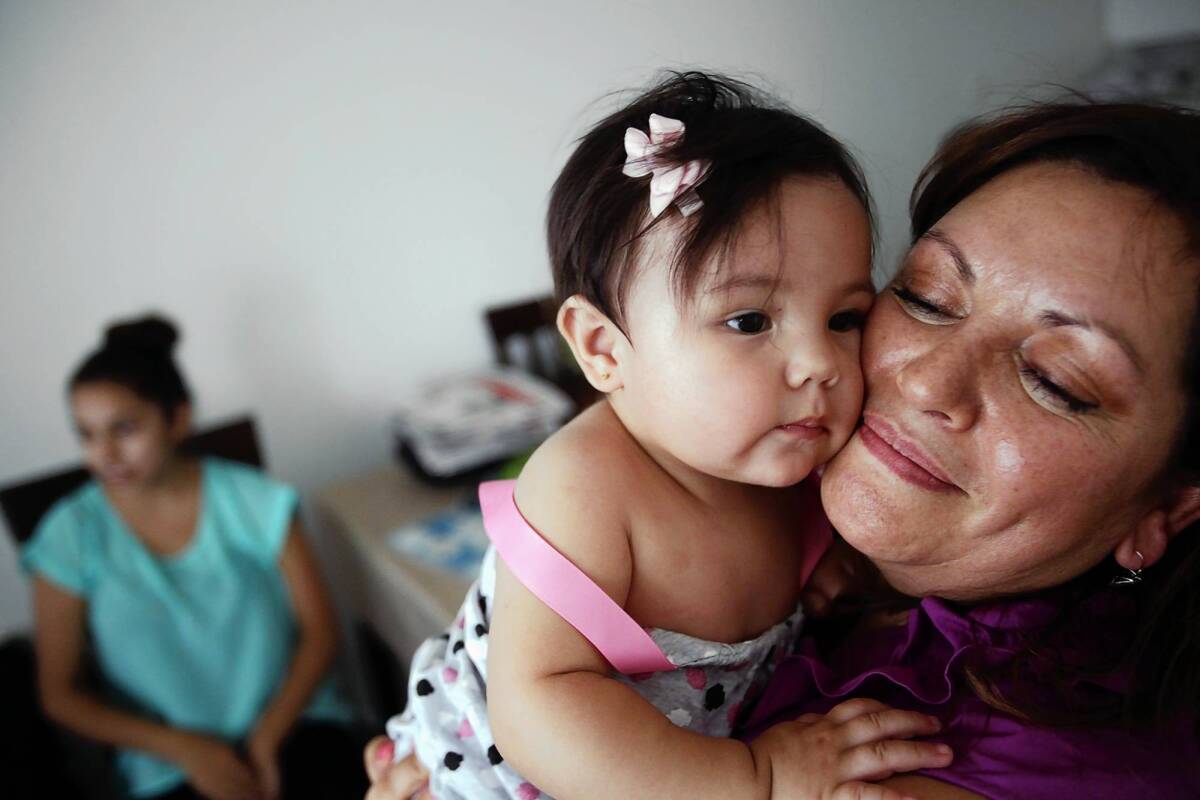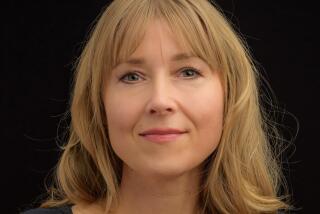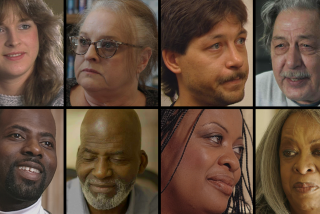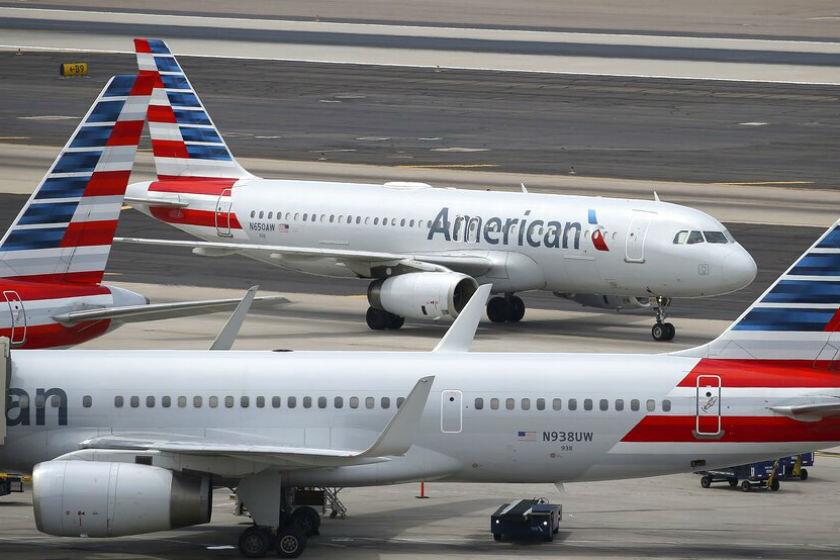Amid slow economic recovery, more Americans identify as ‘lower class’

Chris Roquemore once thought of himself as working class. But it’s hard to keep thinking that, he said, when you’re not working.
The 28-year-old father said he sparred with his supervisors at a retail chain about taking time off after his mother died — and ended up unemployed. Since then, Roquemore has worked odd jobs and started studying nursing at Long Beach City College, trying to get “a career, not a job.” All those changes, in turn, changed the way he thought of himself.
Roquemore is among the small but surging share of Americans who identify themselves as “lower class.” Last year, a record 8.4% of Americans put themselves in that category — more than at any other time in the four decades that the question has been asked on the General Social Survey, a project of the independent research organization Norc at the University of Chicago.
READ: How poverty can affect brainpower
The rising numbers surprised some researchers and activists even in light of the bruising economy. For decades, the vast majority of Americans have seen themselves as “middle class” or “working class.” Even during earlier downturns, so few people called themselves lower class that scholars routinely lumped them with working class. Activists for the poor often avoid the term, deeming it an insult.
When people call themselves lower class, “we’ll say, ‘You’re not lower than someone else. You just have less money,’” said Michaelann Bewsee, co-founder of Arise for Social Justice, a Massachusetts low-income rights group. But many don’t consider it insulting today, Bewsee said.
“They’re just reflecting their economic reality,” she said.
Unemployment surged during the downturn. Millions of homes were repossessed in the years since, and millions more people slipped into poverty. And years after the recession ended, the U.S. Department of Agriculture reported record shares of households were still struggling, at times, to put adequate food on the table.
VIDEO: Bill Gates on poverty in the U.S.
For many, “the feeling is that things are not likely to get better any time soon,” said Michael Zweig, director of the Center for Study of Working Class Life at Stony Brook University.
Last year, less than 55% of Americans agreed that “people like me and my family have a good chance of improving our standard of living,” the lowest level since the General Social Survey first asked the question in 1987. An unusually high share of the unemployed — more than 4 million Americans as of August — have been out of work for six months or longer.
Jobless people have long been more likely than other Americans to call themselves lower class, but in recent years people who work at least part time have been increasingly likely to do so too. Activists say workers are frustrated as jobs with fewer hours and less pay have proliferated, a hallmark of the sluggish recovery.
“It’s not surprising if the American worker is thinking, ‘I’m working harder than I’ve ever worked, yet I’m being paid less — and I’m working two or maybe three jobs,’” said Lola Smallwood Cuevas, project director of the Los Angeles Black Worker Center. “It creates a feeling that you’re trapped.”
For years, Susana Garcia of Hawthorne juggled two full-time jobs at two hotels to cover the mortgage on her house, starting one job early in the morning and leaving the other around midnight. But the hours made her “a mother by phone” — something she rued after her youngest daughter began to skip school.
To spend more time with her daughter, Garcia quit the second job two years ago. But that meant losing the house and the nearly $60,000 she had parted with as a down payment. Her $12.68-an-hour paychecks now have to cover the rent and a host of bills. Nothing is left over to save, she said.
When gallstones sent Garcia to the emergency room four months ago, she decided against surgery because she has no health insurance. But the trip still left her with a bill she is struggling to pay. Garcia has tried to get other jobs, but none will offer her anything better. Pulled out of school to care for her baby sister as a teen, she never got a diploma or GED.
“And if I took a second job again, I might not have enough time to be with my daughter and my grandchild,” she said.
Yet hardship doesn’t completely explain the numbers. Census data show poverty rates were just as high in 1983 and 1993 — years when far fewer Americans called themselves “lower class.” One difference this time around, some scholars suggested, is the widening gap between rich and poor.
Last year, the richest 10% of Americans enjoyed more than half of the income nationwide — the biggest share in nearly a century, a recent UC Berkeley study showed. In countries around the world, the starker the difference between rich and poor, the more likely people are to think of themselves as worse off, said Robert Andersen, a professor of social science at the University of Toronto.
People seem aware of the growing gap. When Americans are asked how much chief executives and unskilled workers make, they have reported bigger differences over time, said Leslie McCall, a Northwestern University sociologist who studies attitudes about inequality. McCall added that the media also paid more attention to inequality during the Occupy Wall Street protests and the last presidential race, making “the 99%” a new catchphrase for the struggling.
High school dropouts are much more likely to call themselves lower class, but the numbers have also jumped among Americans who spent at least some time in college, the General Social Survey shows. From 2002 to 2012, the “lower class” among Americans with one to four years of college more than doubled — from 2.6% to 5.8%.
In many ways, Diana Jimenez is lucky. She has a college degree and a job with a San Fernando Valley nonprofit, and at age 26 she makes more than her mother. Yet as she struggles to pay off college loans, Jimenez can’t imagine calling herself middle class.
“I’m still living at home,” said Jimenez, who said she would call herself either working class or lower class. “I can’t afford to live anywhere else.”
Besides facing new stresses and inequalities, Americans might be thinking differently about class today.
University of Maryland sociologist Philip N. Cohen, who pointed out on his blog the rising numbers of people identifying as lower class, hypothesized that more struggling twentysomethings were doing so because fewer have been raised in union households. Many people told the Los Angeles Times they had no idea what separated the working class from the lower class.
“Working class used to be a term of pride,” said Betsy Leondar-Wright, program director for Class Action, a nonprofit focused on class issues. “That’s somewhat faded out.”
More to Read
Sign up for Essential California
The most important California stories and recommendations in your inbox every morning.
You may occasionally receive promotional content from the Los Angeles Times.










